Tiny House Trailer with Garage Storage Guide
Designing a tiny house trailer with garage storage? Explore genius ideas for tool organization, outdoor gear, and maximizing your THOW’s potential.
More Than a Shed on Wheels: How to Design the Ultimate Tiny House Garage
For those of us who have embraced the freedom of life on wheels, the spirit of adventure is in our DNA. Here at Neat Tiny Home, I talk to countless people who are drawn to the tiny house lifestyle not just to live smaller, but to live bigger—to have more time and resources for their passions. And for many, those passions involve gear: mountain bikes, kayaks, skis, climbing ropes, and a full set of tools to keep everything running. This is where a common tiny house dream collides with a logistical puzzle: where do you store all of it? The answer, my friends, is the tiny house garage. It’s a concept that elevates a simple tiny home on wheels (THOW) into a true adventure basecamp. But creating one isn’t as simple as just adding a shed to the back.
This in-depth guide is my masterclass on how to design and organize a functional, durable, and weight-conscious **tiny house trailer with garage storage**. We’re going to move beyond simple storage sheds and talk about integrated design, smart systems, and the nitty-gritty details that make a mobile garage work. We’ll explore crucial design choices right from the trailer frame up, dive deep into specialized outdoor gear organization, and look at clever tool storage ideas for the mobile maker. This isn’t just about adding a box to your trailer; it’s about thoughtfully creating a space that enables your adventurous lifestyle. If you’ve ever wondered how to bring all your toys with you on the road, you’ve come to the right place. Let’s build the ultimate adventure rig.
Rethinking the “Garage”: What It Means for a Tiny Home on Wheels (THOW)
The first thing we need to do is recalibrate our expectations. When we say “garage” in the THOW world, we’re not talking about a place to park a car. A tiny house garage is a highly specialized, hardworking storage space designed for the unique demands of a mobile life. It’s a gear locker, a workshop, a utility room, and a mudroom all rolled into one compact, and often external, part of your home. It’s the space that bridges the gap between your cozy interior and your rugged outdoor adventures. Understanding its unique function and, more importantly, its unique constraints, is the absolute first step in designing a successful **tiny house trailer with garage storage**. This space must be meticulously planned for weight, weather, and the constant vibrations of the road.
The “Gear Closet” vs. The “Toy Hauler”: Different Types of THOW Garages
There are generally two main approaches to a THOW garage. The first is the “Gear Closet” or “Gear Shed.” This is typically a smaller, often uninsulated space at the back or front of the tiny house, with exterior-only access. It’s perfect for storing bikes, skis, and tools. The second, more ambitious approach is the “Toy Hauler” style. This involves a much larger section of the trailer, often with a large ramp door, designed to hold bigger toys like a motorcycle or an ATV. This space is sometimes integrated with the main living area, with a bed that lowers from the ceiling above the garage space. Choosing which style is right for you depends entirely on your hobbies, your budget, and the overall design of your tiny home. Both require careful planning to create a functional **tiny house trailer with garage storage**.
The Critical Importance of Weight Distribution and Balance on a Trailer
This is the most important, non-negotiable rule of mobile garage design: weight matters. A lot. An improperly balanced trailer is dangerously unstable and prone to swaying, which can be catastrophic on the highway. When designing your **tiny house trailer with garage storage**, you must work with your builder to account for the weight of your gear. Heavy items should be placed as low as possible and centered over the trailer’s axles. A garage at the extreme rear of the trailer can act like a pendulum, so it must be carefully designed to carry only appropriate weight. This is why many designs incorporate the garage space into the gooseneck area or directly over the axles. Always know your trailer’s Gross Vehicle Weight Rating (GVWR) and the weight of your tiny house, and never exceed it. Safety is the number one priority.
Designing the Perfect Tiny House Trailer with Garage Storage from Scratch
The best mobile garages are not afterthoughts; they are an integral part of the tiny house design from the very beginning. The structure and layout of the garage are deeply connected to the choice of trailer and the framing of the house itself. If you have the opportunity to be involved in the design process, you can create a truly custom solution that perfectly fits your gear and your needs. This is where you can make key decisions that will affect the functionality and usability of the space for years to come. Building an effective **tiny house trailer with garage storage** starts with a solid foundation and a well-thought-out plan. Let’s look at the key decision points in the design phase.
Bumper Pull vs. Gooseneck Trailers: Which is Better for Garage Space?
The type of trailer you choose has a massive impact on your garage potential. A standard bumper-pull trailer is a great, versatile option. You can add a garage to the rear or use a large tongue box on the front. However, for those wanting significant, integrated garage space, the gooseneck trailer is the undisputed champion. The raised section that extends over the truck bed is the perfect natural location for a garage. It’s separate from the main living area, its weight is perfectly positioned over the tow vehicle for stability, and it often provides standing or crouching room. This “gooseneck garage” is a highly sought-after feature for a custom-built **tiny house trailer with garage storage**.
| Trailer Type | Best Garage Location | Pros | Cons |
|---|---|---|---|
| Bumper Pull | Rear “shed” or front tongue box | More common; versatile; can be towed by more vehicles. | Rear storage can negatively impact weight balance if too heavy. |
| Gooseneck | The raised gooseneck section | Excellent weight distribution; separate from living space; ample room. | Requires a truck with a bed-mounted hitch; more expensive. |
Integrating the Garage: Interior Access vs. Exterior-Only
Another key design choice is how you will access your garage. Exterior-only access, via one or more shed-style doors, is the simplest and most common method. It keeps dirt, fumes, and gear completely separate from your living space. This is often the best choice for “gear closet” style garages. Interior access, however, can be a huge convenience. Having a small door that connects your living area to your garage means you can grab a tool or a piece of gear without having to go outside, which is a lifesaver in bad weather. For toy hauler designs, a solid, well-sealed wall and door are essential to keep any potential fumes from entering the home. This decision impacts the framing, insulation, and overall flow of your tiny house design.
Smart Solutions for Outdoor Gear Organization in Your THOW Garage
Once your garage space is built, the next challenge is outfitting it. This is where you can get really creative with systems that can securely store bulky, awkwardly shaped items like bikes and kayaks. The key principles for mobile outdoor gear organization are security, modularity, and verticality. Everything must be securely fastened to withstand the bumps and vibrations of the road. The system should be modular and adaptable to accommodate different gear for different seasons. And, of course, you must maximize every inch of vertical space. Let’s look at some of the best systems for achieving this.
The French Cleat System: The Ultimate in Modular Wall Storage
If there is one system I recommend above all others for a THOW garage, it’s the French cleat. A French cleat system consists of wall-mounted strips of wood with a 45-degree angle cut on the top edge. You then build custom holders for all your gear—bikes, skis, tools—with a corresponding 45-degree angle on the back. This allows you to hang any item anywhere on the wall and rearrange them in seconds without any tools. It’s infinitely customizable and incredibly strong. You can build a holder for your mountain bike for summer, and swap it out for a snowboard rack in the winter. It’s the pinnacle of adaptable outdoor gear organization. You can find excellent tutorials on building these systems on sites like YouTube.
Heavy-Duty Bungee Cords, Cargo Nets, and L-Track Systems
For large, bulky items, sometimes simple is best. A web of heavy-duty bungee cords or a cargo net can be perfect for securing things against a wall. A more advanced and versatile option is an L-Track (also known as airline track) system. These are strong aluminum tracks with multiple anchor points that you can bolt directly to the walls and floor of your garage. You can then use a variety of straps and fittings to securely tie down anything from a motorcycle to a generator. It’s the same system used in airplanes and commercial vehicles, so you know it’s strong enough for the road. This is a fantastic addition to any **tiny house trailer with garage storage** that will be holding heavy equipment.
Ingenious Tool Storage Ideas for the Mobile Workshop
For many tiny house owners, the garage isn’t just for sports gear; it’s a mobile workshop. Having a well-organized tool collection is essential for maintaining your tiny house, your tow vehicle, and your gear. The challenge is creating a system that is both organized and road-worthy. You can’t just hang tools on a pegboard and hope for the best; they need to be secured so they don’t become dangerous projectiles during transit. These tool storage ideas are all about combining accessibility with security, creating a space where you can easily find what you need and pack it all up safely in minutes.
The Pegboard vs. Magnetic Strip Debate for Hand Tools
Both pegboards and magnetic strips are great for organizing hand tools like wrenches and screwdrivers. A pegboard offers more versatility for different-sized tools, but the hooks can sometimes fall out during travel. A solution for this is to use zip ties or special locking hooks to secure them. Magnetic strips, on the other hand, are fantastic for holding metal tools securely with no moving parts to worry about. I often recommend a hybrid approach: magnetic strips for your most-used metal tools and a small, secured pegboard for awkwardly shaped items. Both are excellent vertical tool storage ideas that keep your tools visible and easy to grab.
Custom-Built Cubbies and Drawers for Power Tools
Power tools are often bulky and come in cumbersome plastic cases. A much more space-efficient solution is to build custom-fit cubbies or shallow drawers for them. This allows you to store the tool itself without the bulky case. I’ve seen brilliant designs where people build “holsters” for their drills and drivers, allowing them to slide in and out easily. When building drawers, make sure to use heavy-duty locking drawer slides that will prevent them from flying open during transit. This is a more advanced DIY project, but it creates an incredibly efficient and secure system for your valuable power tools.
Maintaining Order: Systems and Habits for Your THOW Garage
Finally, a well-designed garage is only as good as the habits you use to maintain it. In a mobile environment, tidiness is intrinsically linked to safety. A disorganized garage can lead to items shifting, getting damaged, or, worse, causing the entire tiny house to become unbalanced. Developing a few key routines for your **tiny house trailer with garage storage** is not just about staying organized; it’s a critical part of the THOW lifestyle. These habits will ensure your gear is always ready for an adventure and, more importantly, that your home is always ready and safe for the road.
The “Everything Has a Home” Rule and Pre-Travel Lockdown
Before you ever move your tiny house, you must do a full “garage lockdown.” This means every single item must be returned to its designated, secure home. Nothing can be left loose on the floor or a workbench. Create a pre-travel checklist for the garage. It should include items like: “Bikes securely strapped? Check. All drawers latched? Check. Tool cabinet locked? Check.” Walking through this checklist every single time you move will become second nature and will prevent costly damage and dangerous situations on the road. This is the most important habit for anyone with a **tiny house trailer with garage storage**.
Your tiny house garage is the ultimate enabler of a life of freedom and adventure. It’s the bridge between your cozy home and the great outdoors. By designing it thoughtfully and organizing it with intention, you create a space that not only stores your gear but also empowers your passions.
What would you store in your dream tiny house garage? Are you planning a build with adventure in mind? Share your ideas and questions in the comments below!
Frequently Asked Questions (FAQ)
How do I deal with moisture and condensation in an uninsulated garage space?
Moisture control is crucial to prevent rust and mildew. First, ensure there is some form of ventilation, like a small, screened vent, to allow air to circulate. Second, consider using a renewable dehumidifier, like the Eva-Dry units, which contain silica gel beads that absorb moisture and can be “recharged” by plugging them into an outlet. Never store wet gear directly; allow it to dry outside before putting it away.
What kind of flooring is best for a THOW garage?
You need something durable, lightweight, and water-resistant. My top recommendation is rubber coin-grip or diamond plate flooring. It’s incredibly tough, provides great traction, is easy to clean, and helps protect the subfloor. Another great option is a high-quality epoxy coating with a grit additive for texture, similar to what you’d find in a traditional garage.
Can I add a garage to my existing tiny house?
It’s possible, but it can be complex. The easiest way is to add a “shed” structure onto the back of your tiny house, but this must be done with extreme attention to weight and how it attaches to the house’s framing and the trailer itself. It often requires welding and structural work on the trailer frame. You must consult with a professional tiny house builder to ensure it is done safely and doesn’t negatively impact your trailer’s balance and structural integrity.
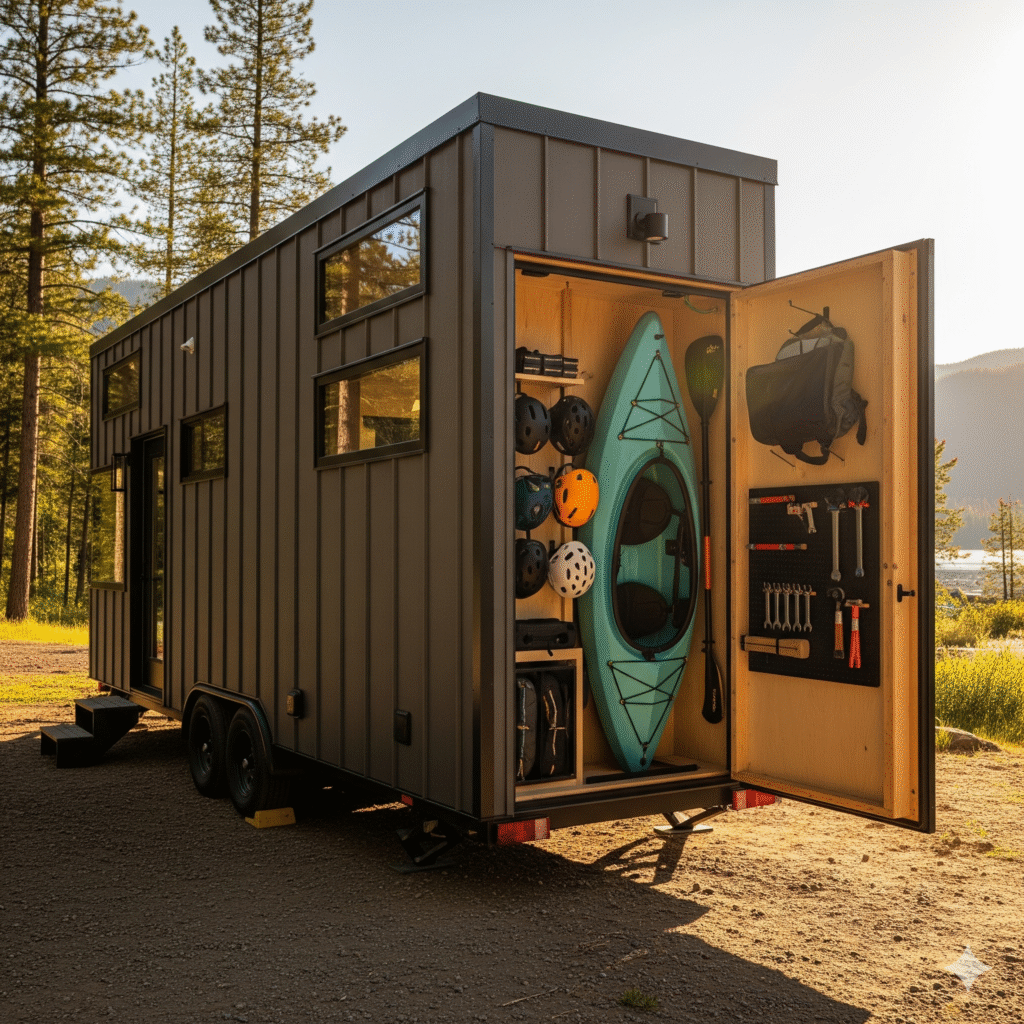
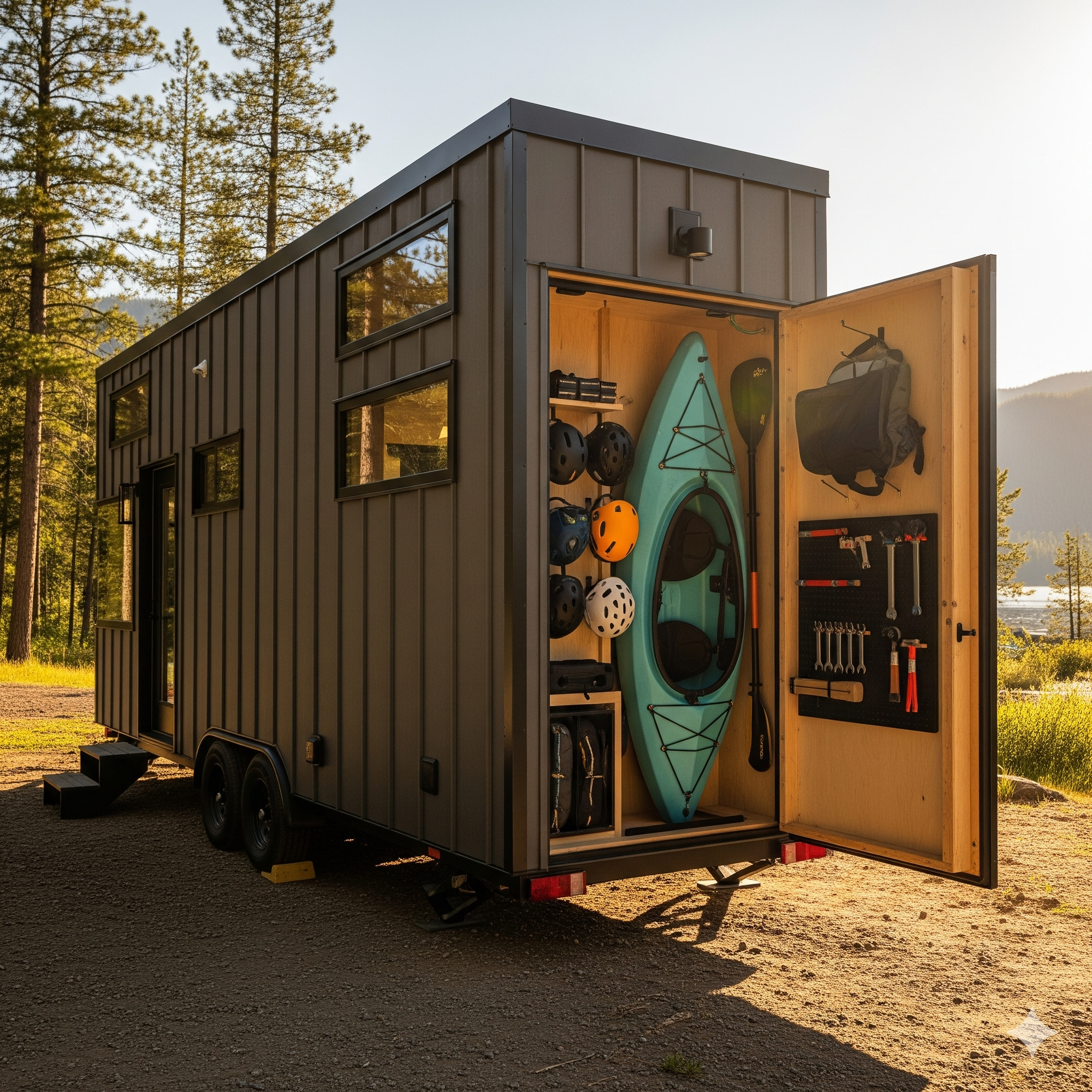
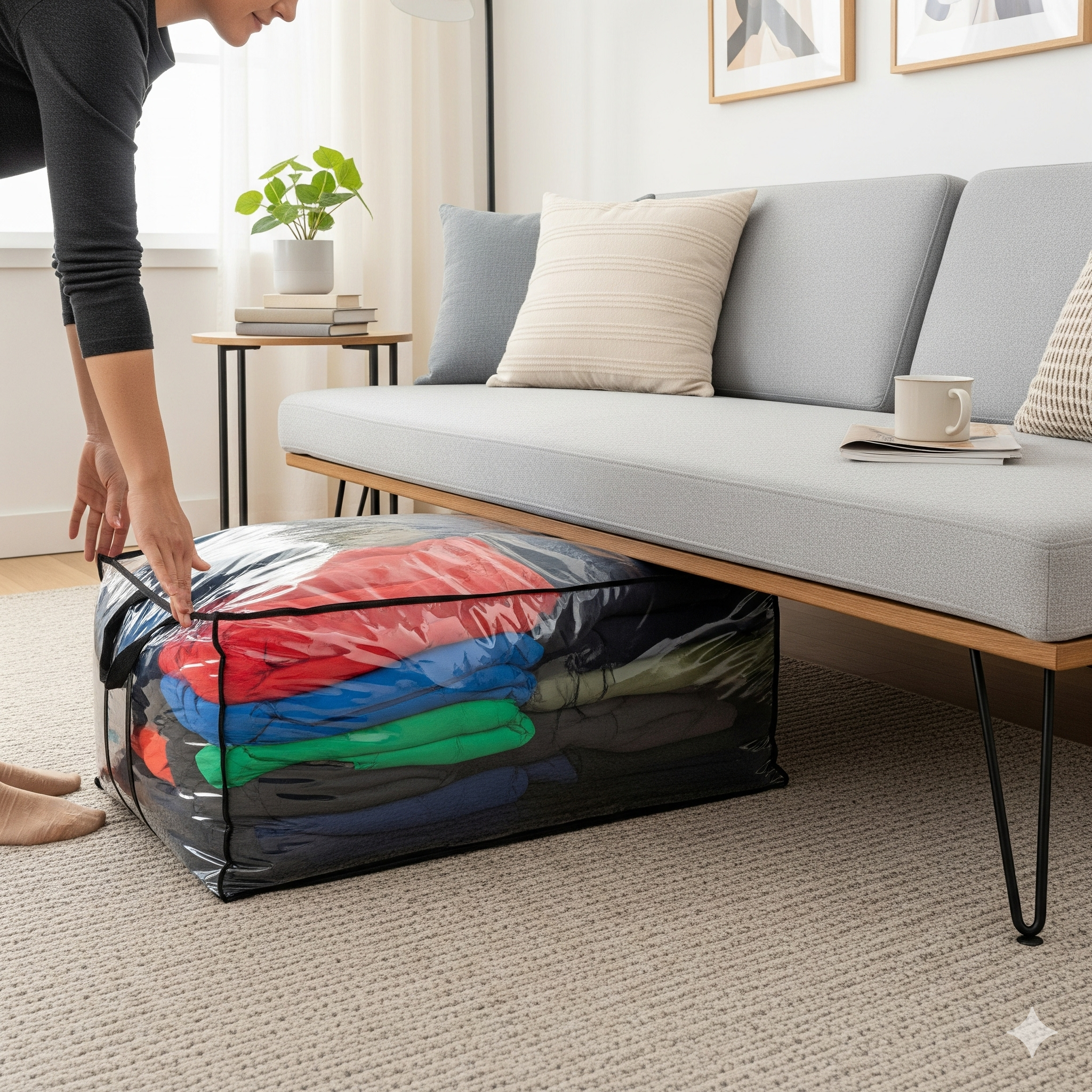
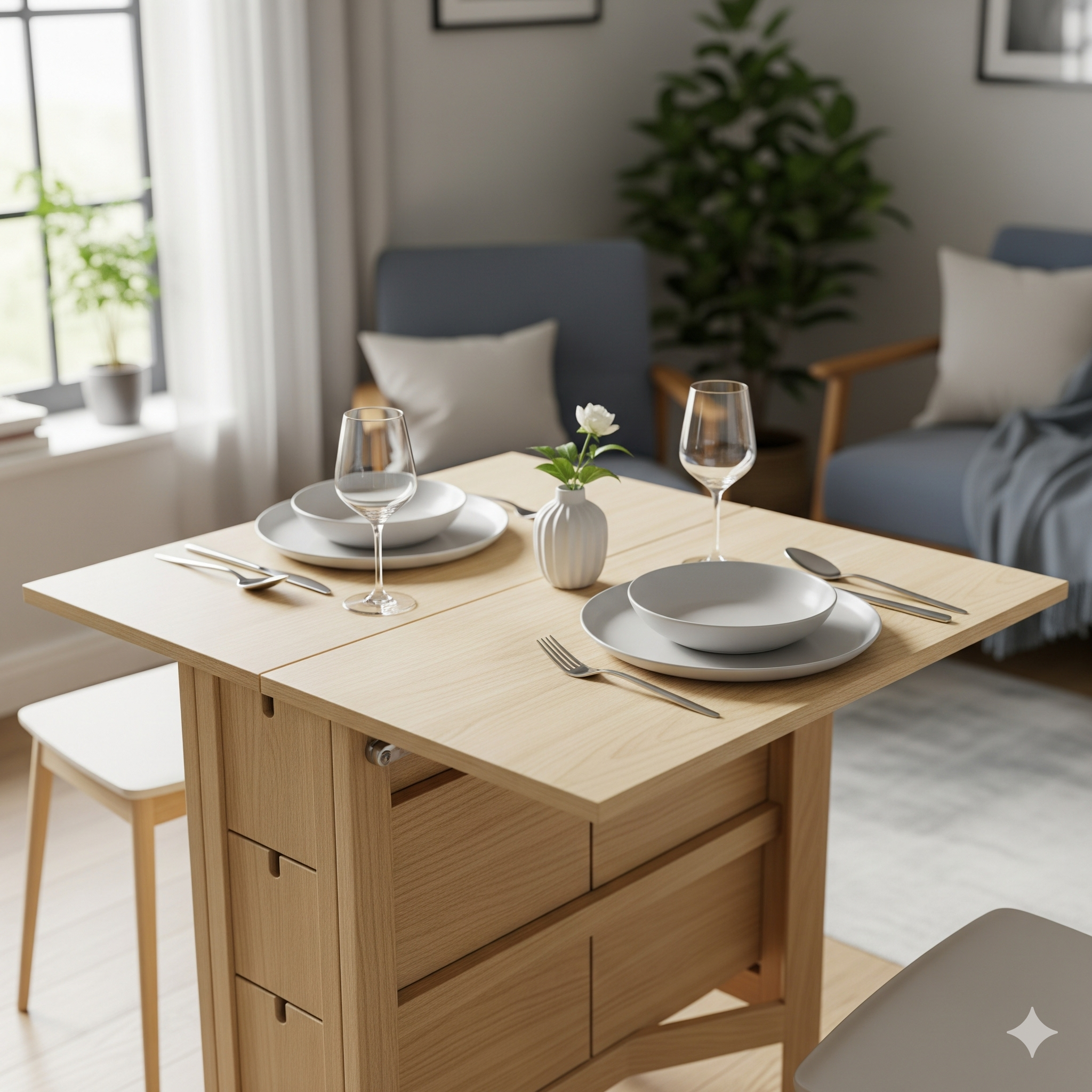
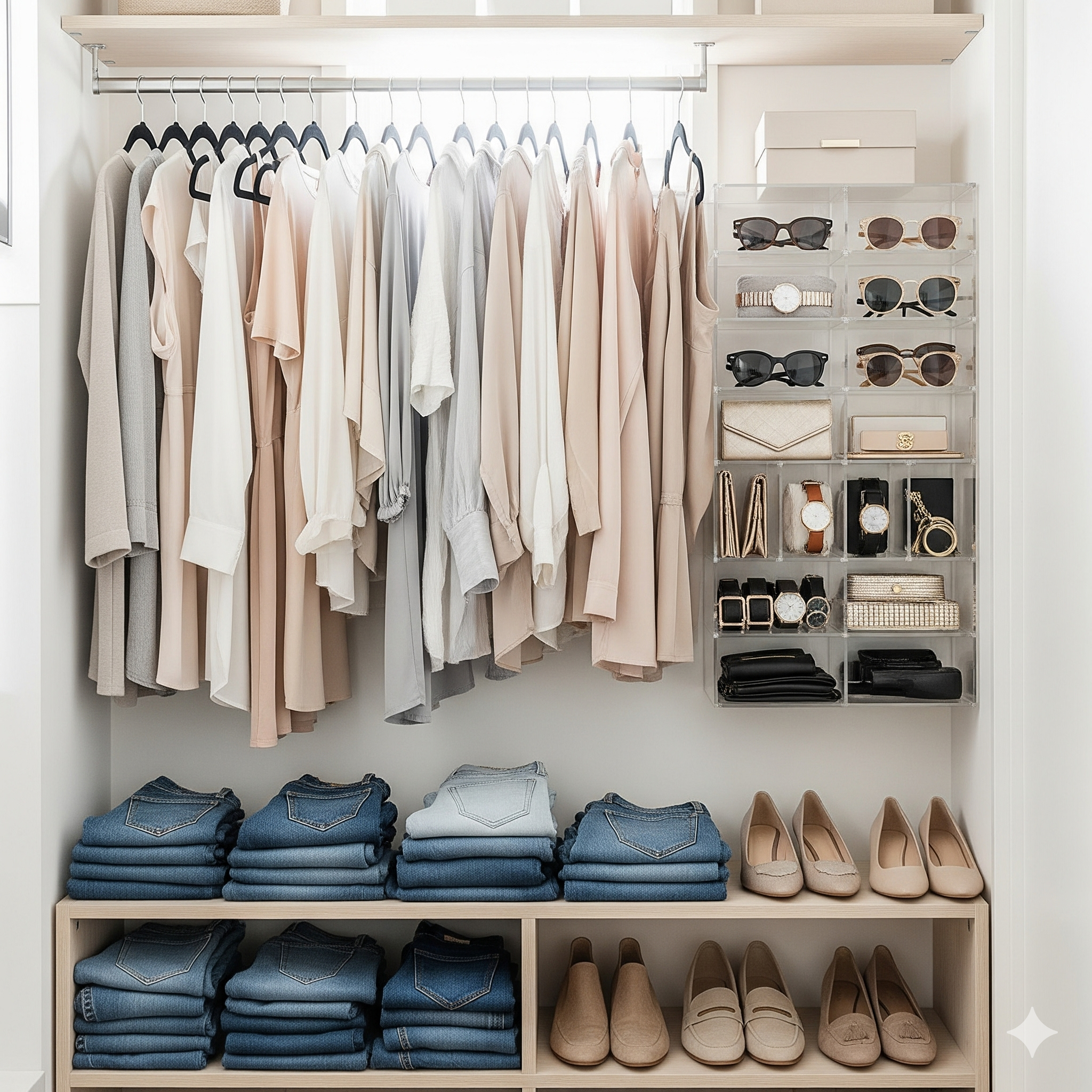
Post Comment